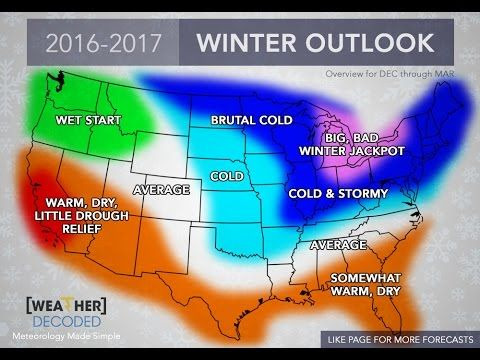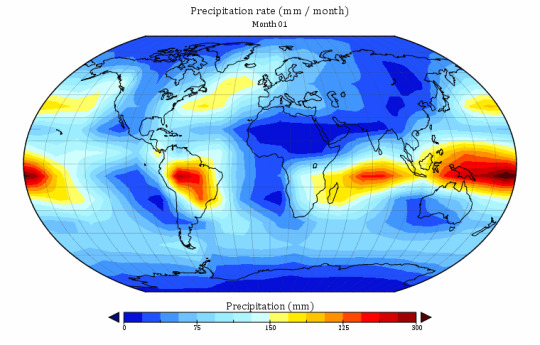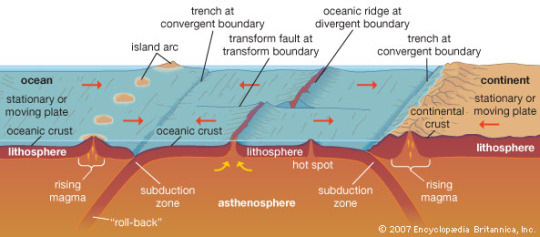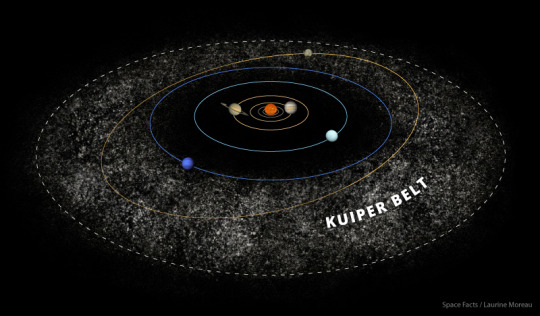Don't wanna be here? Send us removal request.
Text
Links to all 31 Blogs
- https://oceanservice.noaa.gov/facts/oceanographer.html
- https://chem.libretexts.org/Core/Physical_and_Theoretical_Chemistry/Chemical_Bonding/Fundamentals_of_Chemical_Bonding/Ionic_Bonds
- https://www.britannica.com/science/ionic-bond
- https://solarsystem.nasa.gov/planets/solarsystem
- https://www.space.com/56-our-solar-system-facts-formation-and-discovery.html
- https://www.britannica.com/science/geology
- https://www.livescience.com/45986-what-is-chemistry.html
- https://www.britannica.com/science/Earth-sciences
- https://www.britannica.com/science/physical-science
- https://www.smithsonianmag.com/science-nature/diamonds-unearthed-141629226/
- https://byjus.com/chemistry/heterogeneous-mixture-homogeneous-mixture/
- https://www.enotes.com/homework-help/what-difference-between-homogeneous-heterogeneous-346419
- https://www.nationalgeographic.org/encyclopedia/meteorology/
- https://www.livescience.com/44549-what-is-biology.html
- http://www.biology.arizona.edu/
0 notes
Text
Biology Pt.2
Molecular biology is the study of biology at the molecular level. This field overlaps with other areas of biology, particularly those of genetics and biochemistry. Molecular biology is a study of the interactions of the various systems within a cell, including the interrelationships of DNA, RNA, and protein synthesis and how those interactions are regulated.
The next larger scale, cell biology, studies the structural and physiological properties of cells, including their internal behavior, interactions with other cells, and with their environment. This is done on both the microscopic and molecular levels, for unicellular organisms such as bacteria, as well as the specialized cells of multicellular organisms such as humans. Understanding the structure and function of cells is fundamental to all of the biological sciences. The similarities and differences between cell types are particularly relevant to molecular biology.Anatomy is a treatment of the macroscopic forms of such structures organs and organ systems.
Genetics is the science of genes, heredity, and the variation of organisms. Genes encode the information needed by cells for the synthesis of proteins, which in turn play a central role in influencing the final phenotype of the organism. Genetics provides research tools used in the investigation of the function of a particular gene, or the analysis of genetic interactions. Within organisms, genetic information is physically represented as chromosomes, within which it is represented by a particular sequence of amino acids in particular DNA molecules. Developmental biology studies the process by which organisms grow and develop. Developmental biology, originated from embryology, studies the genetic control of cell growth, cellular differentiation, and "cellular morphogenesis," which is the process that progressively gives rise to tissues, organs, and anatomy. Model organisms for developmental biology include the round worm Caenorhabditis elegans.

0 notes
Text
Biology
Biology is the natural science that involves the study of life and living organisms, including their physical and chemical structure, function, development and evolution. Modern biology is a vast field, composed of many branches. Despite the broad scope and the complexity of the science, there are certain unifying concepts that consolidate it into a single, coherent field. In general, biology recognizes the cell as the basic unit of life, genes as the basic unit of heredity, and evolution as the engine that propels the creation of new species. It is also understood that all organisms survive by consuming and transforming energy and by regulating their internal environment.
Sub-disciplines of biology are defined by the scale at which life is studied, the kinds of organisms studied, and the methods used to study them: biochemistry examines the rudimentary chemistry of life; molecular biology studies the complex interactions among biological molecules; cellular biology examines the basic building-block of all life, the cell; physiology examines the physical and chemical functions of tissues, organs, and organ systems; ecology examines how organisms interact in their environment; and evolutionary biology examines the processes that produced the diversity of life.
Cell theory states that the cell is the fundamental unit of life, that all living things are composed of one or more cells, and that all cells arise from other cells through cell division. In multicellular organisms, every cell in the organism's body derives ultimately from a single cell in a fertilized egg. The cell is also considered to be the basic unit in many pathological processes. In addition, the phenomenon of energy flow occurs in cells in processes that are part of the function known as metabolism. Finally, cells contain hereditary information (DNA), which is passed from cell to cell during cell division. Research into the origin of life, abiogenesis, amounts to an attempt to discover the origin of the first cells.

0 notes
Text
Meteorology Pt.4
There are many types of meteorology studies.Aviation meteorology deals with the impact of weather on air traffic management. It is important for air crews to understand the implications of weather on their flight plan as well as their aircraft, as noted by the Aeronautical Information Manual. Meteorologists, soil scientists, agricultural hydrologists, and agronomists are persons concerned with studying the effects of weather and climate on plant distribution, crop yield, water-use efficiency, phenology of plant and animal development, and the energy balance of managed and natural ecosystems. Conversely, they are interested in the role of vegetation on climate and weather.Nuclear meteorology investigates the distribution of radioactive aerosols and gases in the atmosphere.Maritime meteorology deals with air and wave forecasts for ships operating at sea.
Organizations such as the Ocean Prediction Center, Honolulu National Weather Service forecast office, United Kingdom Met Office, and JMA prepare high seas forecasts for the world's oceans.Military meteorology is the research and application of meteorology for military purposes. In the United States, the United States Navy's Commander, Naval Meteorology and Oceanography Command oversees meteorological efforts for the Navy and Marine Corps while the United States Air Force's Air Force Weather Agency is responsible for the Air Force and Army.Environmental meteorology mainly analyzes industrial pollution dispersion physically and chemically based on meteorological parameters such as temperature, humidity, wind, and various weather conditions. Hydro-meteorology is the branch of meteorology that deals with the hydrologic cycle, the water budget, and the rainfall statistics of storms. A hydro-meteorologist prepares and issues forecasts of accumulating precipitation, heavy rain, heavy snow, and highlights areas with the potential for flash flooding. Typically the range of knowledge that is required overlaps with climatology, mesoscale and synoptic meteorology, and other geosciences. The multidisciplinary nature of the branch can result in technical challenges, since tools and solutions from each of the individual disciplines involved may behave slightly differently, be optimized for different hard- and software platforms and use different data formats.

0 notes
Text
Meteorology Pt.3
The study of the atmosphere can be divided into distinct areas that depend on both time and spatial scales. At one extreme of this scale is climatology. In the timescales of hours to days, meteorology separates into micro-, meso-, and synoptic scale meteorology. Respectively, the geospatial size of each of these three scales relates directly with the appropriate timescale.Other subclassifications are used to describe the unique, local, or broad effects within those subclasses.
Microscale meteorology is the study of atmospheric phenomena on a scale of about 1 kilometre or less. Individual thunderstorms, clouds, and local turbulence caused by buildings and other obstacles such as individual hills are modeled on this scale. Mesoscale meteorology is the study of atmospheric phenomena that has horizontal scales ranging from 1 km to 1000 km and a vertical scale that starts at the Earth's surface and includes the atmospheric boundary layer, troposphere, tropopause, and the lower section of the stratosphere. Mesoscale timescales last from less than a day to weeks. The events typically of interest are thunderstorms, squall lines, fronts, precipitation bands in tropical and extratropical cyclones, and topographically generated weather systems such as mountain waves and sea and land breezes.
Synoptic scale meteorology predicts atmospheric changes at scales up to 28 days, in time and space. At the synoptic scale, the Coriolis acceleration acting on moving air masses plays a dominant role in predictions. The phenomena typically described by synoptic meteorology include events such as extratropical cyclones, baroclinic troughs and ridges, frontal zones, and to some extent jet streams. All of these are typically given on weather maps for a specific time. The minimum horizontal scale of synoptic phenomena is limited to the spacing between surface observation stations. Global scale meteorology is the study of weather patterns related to the transport of heat from the tropics to the poles. Very large scale oscillations are of importance at this scale. These oscillations have time periods typically on the order of months, such as the Madden–Julian oscillation, or years, such as the El Niño–Southern Oscillation and the Pacific decadal oscillation. Global scale meteorology pushes into the range of climatology. The traditional definition of climate is pushed into larger timescales and with the understanding of the longer time scale global oscillations, their effect on climate and weather disturbances can be included in the synoptic and mesoscale timescales predictions.

0 notes
Text
Meteorology Pt.2
Weather forecasting is the application of science and technology to predict the state of the atmosphere at a future time and given location. Humans have attempted to predict the weather informally for millennia and formally since at least the 19th century. Weather forecasts are made by collecting quantitative data about the current state of the atmosphere and using scientific understanding of atmospheric processes to project how the atmosphere will evolve.
Once an all-human endeavor based mainly upon changes in barometric pressure, current weather conditions, and sky condition,forecast models are now used to determine future conditions. Human input is still required to pick the best possible forecast model to base the forecast upon, which involves pattern recognition skills, teleconnections, knowledge of model performance, and knowledge of model biases. The chaotic nature of the atmosphere, the massive computational power required to solve the equations that describe the atmosphere, error involved in measuring the initial conditions, and an incomplete understanding of atmospheric processes mean that forecasts become less accurate as the difference in current time and the time for which the forecast is being made increases. The use of ensembles and model consensus help narrow the error and pick the most likely outcome.
There are a variety of end uses to weather forecasts. Weather warnings are important forecasts because they are used to protect life and property. Forecasts based on temperature and precipitation are important to agriculture, and therefore to commodity traders within stock markets. Temperature forecasts are used by utility companies to estimate demand over coming days. On an everyday basis, people use weather forecasts to determine what to wear. Since outdoor activities are severely curtailed by heavy rain, snow, and wind chill, forecasts can be used to plan activities around these events, and to plan ahead and survive them.

0 notes
Text
Meteorology
Meteorology is a branch of the atmospheric sciences which includes atmospheric chemistry and atmospheric physics, with a major focus on weather forecasting. The study of meteorology dates back millennia, though significant progress in meteorology did not occur until the 18th century. The 19th century saw modest progress in the field after weather observation networks were formed across broad regions. Prior attempts at prediction of weather depended on historical data. It wasn't until after the elucidation of the laws of physicsand, more particularly, the development of the computer, allowing for the automated solution of a great many equations that model the weather, in the latter half of the 20th century that significant breakthroughs in weather forecasting were achieved.
Meteorological phenomena are observable weather events that are explained by the science of meteorology. Meteorological phenomena are described and quantified by the variables of Earth's atmosphere: temperature, air pressure, water vapor, mass flow, and the variations and interactions of those variables, and how they change over time. Different spatial scales are used to describe and predict weather on local, regional, and global levels.
Meteorology, climatology, atmospheric physics, and atmospheric chemistry are sub-disciplines of the atmospheric sciences. Meteorology and hydrology compose the interdisciplinary field of hydrometeorology. The interactions between Earth's atmosphere and its oceans are part of a coupled ocean-atmosphere system. Meteorology has application in many diverse fields such as the military, energy production, transport, agriculture, and construction.

0 notes
Text
Hetero and Homogeneous Mixtures
A homogeneous mixture is a solid, liquid or gaseous mixture that has the same proportions of its components throughout a given sample or multiple samples of different proportion. Homogeneous mixture can have a variable composition. Conversely, a heterogeneous mixture is not uniform in composition, but proportions of its components vary throughout the sample. "Homogeneous" and "heterogeneous" are not absolute terms, but depend on context and size of the sample. In chemistry, a homogeneous suspension of material means that when dividing the volume in half, the same amount of material is suspended in both halves of the substance. However, it might be possible to see the particles under the microscope. An example of a homogeneous mixture is air. In physical chemistry and materials science that refers to substances and mixtures which are in a single phase. This is in contrast to a substance that is heterogeneous.
A solution is a special type of homogeneous mixture. Solutions are homogeneous because the ratio of solute to solvent remains the same throughout the solution even if homogenized with multiple sources, and stable because the solute will not settle out after any period of time, and it cannot be removed by a filter or by centrifuge. This type of mixture is very stable, its particles do not settle, or separate. As a homogeneous mixture, a solution has one phase although the solute and solvent can vary: for example, salt water, juice. Air can be more specifically described as a gaseous solution. Since interactions between molecules play almost no role, dilute gases form rather trivial solutions. In part of the literature, they are not even classified as solutions. In chemistry, a mixture is a substance containing two or more elements or compounds that are not covalently bound to each other and which retain their own chemical and physical identities, a substance which has two or more constituent physical substances. Mixtures, in the broader sense, are two or more substances physically in the same place, but these are not chemically combined, and therefore ratios are not necessarily considered.

0 notes
Text
Science of the Diamond
Diamond is a metastable allotrope of carbon, where the carbon atoms are arranged in a variation of the face-centered cubic crystal structure called a diamond lattice. Diamond is less stable than graphite, but the conversion rate from diamond to graphite is negligible at standard conditions. Diamond is renowned as a material with superlative physical qualities, most of which originate from the strong covalent bonding between its atoms. In particular, diamond has the highest hardness and thermal conductivity of any bulk material. Those properties determine the major industrial application of diamond in cutting and polishing tools and the scientific applications in diamond knives and diamond anvil cells.
Because of its extremely rigid lattice, it can be contaminated by very few types of impurities, such as boron and nitrogen. Small amounts of defects or impurities color diamond blue, yellow (nitrogen), brown (lattice defects), green (radiation exposure), purple, pink, orange or red. Diamond also has relatively high optical dispersion (ability to disperse light of different colors).
Most natural diamonds are formed at high temperature and pressure at depths of 140 to 190 kilometers (87 to 118 mi) in the Earth's mantle. Carbon-containing minerals provide the carbon source, and the growth occurs over periods from 1 billion to 3.3 billion years (25% to 75% of the age of the Earth). Diamonds are brought close to the Earth's surface through deep volcanic eruptions by magma, which cools into igneous rocks known as kimberlites and lamproites. Diamonds can also be produced synthetically in a HPHT methodwhich approximately simulates the conditions in the Earth's mantle. An alternative, and completely different growth technique is chemical vapor deposition (CVD). Several non-diamond materials, which include cubic zirconia and silicon carbide and are often called diamond simulants, resemble diamond in appearance and many properties. Special gemological techniques have been developed to distinguish natural diamonds, synthetic diamonds, and diamond simulants.

0 notes
Text
Physical Science
Physical science is a branch of natural science that studies non-living systems, in contrast to life science. It in turn has many branches, each referred to as a "physical science", together called the "physical sciences". However, the term "physical" creates an unintended, somewhat arbitrary distinction, since many branches of physical science also study biological phenomena and branches of chemistry such as organic chemistry.
Physics- branch of science that studies matter and its motion through space and time, along with related concepts such as energy and force. Physics is one of the "fundamental sciences" because the other natural sciences deal with systems that seem to obey the laws of physics. According to physics, the physical laws of matter, energy and the fundamental forces of nature govern the interactions between particles and physical entities. Some of the basic pursuits of physics, which include some of the most prominent developments in modern science in the last millennium, include:
-Describing the nature, measuring and quantifying of bodies and their motion, dynamics etc.
-Kinetic molecular theory
-The principles of waves and sound
-The principles of electricity, magnetism, and electromagnetism
-The principles, sources, and properties of light
-Newton's laws of motion
-Mass, force and weight
-Momentum and conservation of energy
-Gravity, theories of gravity
-Energy, work, and their relationship
-Motion, position, and energy
-Different forms of Energy, their interconversion and the inevitable loss of energy in the form of heat.
-Energy conservation, conversion, and transfer.
-Energy source the transfer of energy from one source to work in another.
-Phases of matter and phase transitions
-Temperature and thermometers
-Energy and heat
-Heat flow: conduction, convection, and radiation
-The three laws of thermodynamics

0 notes
Text
Earth Science
Earth science or geoscience is a widely embraced term for the fields of science related to the planet Earth. It is the branch of science dealing with the physical constitution of the earth and its atmosphere. Earth science is the study of our planet’s physical characteristics, from earthquakes to raindrops, and floods to fossils. Earth science can be considered to be a branch of planetary science, but with a much older history. “Earth science” is a broad term that encompasses four main branches of study, each of which is further broken down into more specialized fields.
There are both reductionist and holistic approaches to Earth sciences. It is also the study of the Earth and its neighbors in space. Some Earth scientists use their knowledge of the Earth to locate and develop energy and mineral resources. Others study the impact of human activity on Earth's environment, and design methods to protect the planet. Some use their knowledge about Earth processes such as volcanoes, earthquakes, and hurricanes to plan communities that will not expose people to these dangerous events.
The Earth sciences can include the study of geology, the lithosphere, and the large-scale structure of the Earth's interior, as well as the atmosphere, hydrosphere, and biosphere. Typically, Earth scientists use tools from geography, chronology, physics, chemistry, biology, and mathematics to build a quantitative understanding of how the Earth works and evolves. Earth science affects our everyday lives. For example, meteorologists study the weather and watch for dangerous storms. Hydrologists study water and warn of floods. Seismologists study earthquakes and try to predict where they will strike. Geologists study rocks and help to locate useful minerals. Earth scientists mainly work “in the field”—climbing mountains, exploring the seabed, crawling through caves, or wading in swamps. They measure and collect samples, then they record their findings on charts and maps.

0 notes
Text
Chemistry
Chemistry is the scientific discipline involved with compounds composed of atoms, elements, and molecules, combinations of atoms: their composition, structure, properties, behavior and the changes they undergo during a reaction with other compounds.Chemistry addresses topics such as how atoms and molecules interact via chemical bonds to form new chemical compounds. There are four types of chemical bonds: covalent bonds, in which compounds share one or more electron, ionic bonds, in which a compound donates one or more electrons to another compound to produce ions: cations and anions,hydrogen bonds, and Van der Waals force bonds.
In the scope of its subject, chemistry occupies an intermediate position between physics and biology. It is sometimes called the central science because it provides a foundation for understanding both basic and applied scientific disciplines at a fundamental level.Examples include plant chemistry , the formation of igneous rocks , how atmospheric ozone is formed and how environmental pollutants are degraded , the properties of the soil on the moon , how medications work , and how to collect DNA evidence at a crime scene.
The history of chemistry represents a time span from ancient history to the present. By 1000 BC, civilizations used technologies that would eventually form the basis of the various branches of chemistry. Examples include extracting metals from ores, making pottery and glazes, fermenting beer and wine, extracting chemicals from plants for medicine and perfume, rendering fat into soap, making glass, and making alloys like bronze. The protoscience of chemistry, alchemy, was unsuccessful in explaining the nature of matter and its transformations. However, by performing experiments and recording the results, alchemists set the stage for modern chemistry. While both alchemy and chemistry are concerned with matter and its transformations, chemists are seen as applying scientific method to their work. Chemistry is considered to have become an established science with the work of Antoine Lavoisier, who developed a law of conservation of mass that demanded careful measurement and quantitative observations of chemical phenomena. The history of chemistry is intertwined with the history of thermodynamics, especially through the work of Willard Gibbs.Chemistry was preceded by its protoscience, alchemy, which is an intuitive but non-scientific approach to understanding the elements, compounds, and their interactions. It was unsuccessful in explaining the nature of matter and its transformations, but by performing experiments and recording the results, alchemists set the stage for modern chemistry. The distinction began to emerge when a clear differentiation between alchemy and chemistry was made by Robert Boyle in 1661. The application of the scientific method in chemistry was the crucial difference.

0 notes
Text
Geology Pt.3
Plate tectonics is a scientific theorydescribing the large-scale motion of seven large plates and the movements of a larger number of smaller plates of the Earth's lithosphere, since tectonic processes began on Earth between 3 and 3.5 billion years ago. The model builds on the concept of continental drift, an idea developed during the first decades of the 20th century. The geoscientific community accepted plate-tectonic theory after seafloor spreading was validated in the late 1950s and early 1960s.
The lithosphere, which is the rigid outermost shell of a planet, is broken into tectonic plates. The Earth's lithosphere is composed of seven or eight major plates and many minor plates. Where the plates meet, their relative motion determines the type of boundary: convergent, divergent, or transform. Earthquakes, volcanic activity, mountain-building, and oceanic trench formation occur along these plate boundaries. The relative movement of the plates typically ranges from zero to 100 mm annually.
Tectonic plates are composed of oceanic lithosphere and thicker continental lithosphere, each topped by its own kind of crust. Along convergent boundaries, subduction, or one plate moving under another, carries the lower one down into the mantle; the material lost is roughly balanced by the formation of new crust along divergent margins by seafloor spreading. In this way, the total surface of the lithosphere remains the same. This prediction of plate tectonics is also referred to as the conveyor belt principle. Earlier theories, since disproven, proposed gradual shrinking or gradual expansion of the globe.
Tectonic plates are able to move because the Earth's lithosphere has greater mechanical strength than the underlying asthenosphere. Lateral density variations in the mantle result in convection; that is, the slow creeping motion of Earth's solid mantle. Plate movement is thought to be driven by a combination of the motion of the seafloor away from spreading ridges due to variations in topography and density changes in the crust. At subduction zones the relatively cold, dense crust is "pulled" or sinks down into the mantle over the downward convecting limb of a mantle cell. Another explanation lies in the different forces generated by tidal forces of the Sun and Moon. The relative importance of each of these factors and their relationship to each other is unclear, and still the subject of much debate.

0 notes
Text
Geology Pt.2
Rock or stone is a natural substance, a solid aggregate of one or more minerals or mineraloids. For example, granite, a common rock, is a combination of the minerals quartz, feldspar and biotite. The Earth's outer solid layer, the lithosphere, is made of rock.Rock has been used by humankind throughout history. The minerals and metals in rocks have been essential to human civilization.Three major groups of rocks are defined: igneous, sedimentary, and metamorphic. The scientific study of rocks is called petrology, which is an essential component of geology.
Rocks are composed of grains of minerals, which are homogeneous solids formed from a chemical compound arranged in an orderly manner. The aggregate minerals forming the rock are held together by chemical bonds. The types and abundance of minerals in a rock are determined by the manner in which it was formed.
Many rocks contain silica, a compound of silicon and oxygen that forms 74.3% of the Earth's crust. This material forms crystals with other compounds in the rock. The proportion of silica in rocks and minerals is a major factor in determining their name and properties.
Rocks are classified according to characteristics such as mineral and chemical composition, permeability, texture of the constituent particles, and particle size. These physical properties are the result of the processes that formed the rocks. Over the course of time, rocks can transform from one type into another, as described by a geological model called the rock cycle. This transformation produces three general classes of rock: igneous, sedimentary, and metamorphic.
Those three classes are subdivided into many groups. There are, however, no hard-and-fast boundaries between allied rocks. By increase or decrease in the proportions of their minerals, they pass through gradations from one to the other; the distinctive structures of one kind of rock may thus be traced gradually merging into those of another. Hence the definitions adopted in rock names simply correspond to selected points in a continuously graduated series.

0 notes
Text
Geology
Geology is an earth science concerned with the solid Earth, the rocks of which it is composed, and the processes by which they change over time. Geology can also refer to the study of the solid features of any terrestrial planet or natural satellite,
Geology describes the structure of the Earth beneath its surface, and the processes that have shaped that structure. It also provides tools to determine the relative and absolute ages of rocks found in a given location, and also to describe the histories of those rocks. By combining these tools, geologists are able to chronicle the geological history of the Earth as a whole, and also to demonstrate the age of the Earth. Geology provides the primary evidence for plate tectonics, the evolutionary history of life, and the Earth's past climates.
Geologists use a wide variety of methods to understand the Earth's structure and evolution, including field work, rock description, geophysical techniques, chemical analysis, physical experiments, and numerical modelling. In practical terms, geology is important for mineral and hydrocarbon exploration and exploitation, evaluating water resources, understanding of natural hazards, the remediation of environmental problems, and providing insights into past climate change. Geology, a major academic discipline, also plays a role in geotechnical engineering.

0 notes
Text
Solar system Pt.7
The Kuiper belt occasionally called the Edgeworth–Kuiper belt, is a circumstellar disc in the outer Solar System, extending from the orbit of Neptune to approximately 50 AU from the Sun.It is similar to the asteroid belt, but is far larger—20 times as wide and 20 to 200 times as massive. Like the asteroid belt, it consists mainly of small bodies or remnants from when the Solar System formed. While many asteroids are composed primarily of rock and metal, most Kuiper belt objects are composed largely of frozen volatiles, such as methane, ammonia and water. The Kuiper belt is home to three officially recognized dwarf planets: Pluto, Haumea and Makemake. Some of the Solar System's moons, such as Neptune's Triton and Saturn's Phoebe, may have originated in the region.
The Kuiper belt was named after Dutch-American astronomer Gerard Kuiper, though he did not predict its existence. In 1992, 1992 QB1 was discovered, the first Kuiper belt object since Pluto. Since its discovery, the number of known KBOs has increased to over a thousand, and more than 100,000 KBOs over 100 km in diameter are thought to exist. The Kuiper belt was initially thought to be the main repository for periodic comets, those with orbits lasting less than 200 years. Studies since the mid-1990s have shown that the belt is dynamically stable and that comets' true place of origin is the scattered disc, a dynamically active zone created by the outward motion of Neptune 4.5 billion years ago;[9] scattered disc objects such as Eris have extremely eccentric orbits that take them as far as 100 AU from the Sun.
The Kuiper belt is distinct from the theoretical Oort cloud, which is a thousand times more distant and is mostly spherical. The objects within the Kuiper belt, together with the members of the scattered disc and any potential Hills cloud or Oort cloud objects, are collectively referred to as trans-Neptunian objects .Pluto is the largest and most massive member of the Kuiper belt, and the largest and the second-most-massive known TNO, surpassed only by Eris in the scattered disc. Originally considered a planet, Pluto's status as part of the Kuiper belt caused it to be reclassified as a dwarf planet in 2006. It is compositionally similar to many other objects of the Kuiper belt and its orbital period is characteristic of a class of KBOs, known as "plutinos", that share the same 2:3 resonance with Neptune.

0 notes
Text
Solar system Pt.6
A comet is an icy small Solar System body that, when passing close to the Sun, warms and begins to release gases, a process called outgassing. This produces a visible atmosphere or coma, and sometimes also a tail. These phenomena are due to the effects of solar radiation and the solar wind acting upon the nucleus of the comet. Comet nuclei range from a few hundred metres to tens of kilometres across and are composed of loose collections of ice, dust, and small rocky particles. The coma may be up to 15 times the Earth's diameter, while the tail may stretch one astronomical unit. If sufficiently bright, a comet may be seen from the Earth without the aid of a telescope and may subtend an arc of 30° across the sky. Comets have been observed and recorded since ancient times by many cultures.
Comets usually have highly eccentric elliptical orbits, and they have a wide range of orbital periods, ranging from several years to potentially several millions of years. Short-period comets originate in the Kuiper belt or its associated scattered disc, which lie beyond the orbit of Neptune. Long-period comets are thought to originate in the Oort cloud, a spherical cloud of icy bodies extending from outside the Kuiper belt to halfway to the nearest star. Long-period comets are set in motion towards the Sun from the Oort cloud by gravitational perturbationscaused by passing stars and the galactic tide. Hyperbolic comets may pass once through the inner Solar System before being flung to interstellar space. The appearance of a comet is called an apparition.
Comets are distinguished from asteroids by the presence of an extended, gravitationally unbound atmosphere surrounding their central nucleus. This atmosphere has parts termed the coma and the tail. However, extinct comets that have passed close to the Sun many times have lost nearly all of their volatile ices and dust and may come to resemble small asteroids. Asteroids are thought to have a different origin from comets, having formed inside the orbit of Jupiter rather than in the outer Solar System.The discovery of main-belt comets and active centaur minor planets has blurred the distinction between asteroids and comets.

0 notes